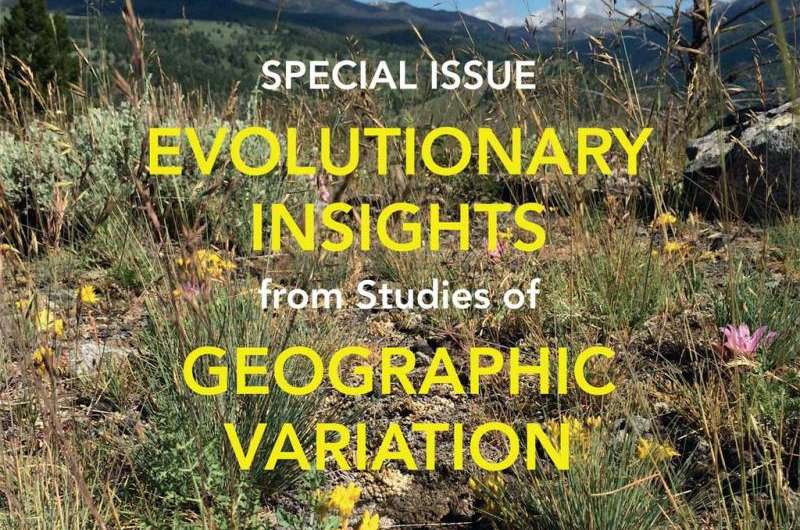Only time will tell? Looking deeply into variable drivers of plant evolution

For organisms that lack legs, plants get around plenty. Their variability across the landscape begs an evolutionary lens for geographical studies. This perspective promises to be increasingly insightful as global warming and anthropogenic environmental alteration take root as the new normal. Dr. Julie Etterson, Professor of Biology at University of Minnesota Duluth and co-editor of this American Journal of Botany special issue, says the adaptive capacity of wild plants offers "the basis for hope" for continued persistence of wild plants and our existence among them. Prior research has established that plants, by and large, are capable of evolution as their surroundings transform. This collection, "Evolutionary Insights from Studies of Geographic Variation: Contemporary Variation and Looking to the Future," builds on that knowledge by looking deeply into variable drivers of plant evolution.
According to Etterson, scientists find individualistic responses at some level precisely because the earth's flora is tremendously diverse. Yet, she says, "a coherent response specifically to climate is also broadly evident" among plants. The coherence in this collection of research is the geographical focus that provides insight into future change. This special issue is compelling and rich because of the myriad scales, methods, and findings reported in the studies collected here.
The first of two sections, "Contemporary Geographic Variation," reveals several recent findings borne from looking at a broad scale. We know, for instance, plants' coping with drought is not superficial but rather a genetic response to environmental gradients, influenced by ploidy variation (Etterson et al., 2016b) and allele frequency (Sork et al., 2016). We can see, too, that species within a given population will change that population's distribution because one adaptation does not fit all—not when considering the varying relationships between geography, including climate, and seed traits (Burghardt et al., 2016; Soper Gorden et al., 2016) and other traits (Riordan et al., 2016; Pettengill et al., 2016). Herbarium specimens (Bontrager and Angert, 2016), meta-analysis (Grossenbacher et al., 2016), and a transplant study (Chambers and Emery, 2016) describe and interpret the different relationships of mating systems and geographic attributes.
All of these findings contribute to a knowledge base that enables our working with more thoughtful manipulations and models. As explained in the second section, "Looking to the Future," scaling up can be problematic, surely in plant-pollinator situations (Burkle et al., 2016). But predictive pursuits are informative nonetheless (Sexton and Dickman, 2016). From them, we are reminded that two steps in one direction might be one step in an undesired other direction—that is, ramifications of correlated traits demand our attention (Schneider and Mazer, 2016)—and we learn where hotspots of allelic diversity are likely to exist in years to come (Brown et al., 2016).
With Project Baseline, a new seed bank, the time is now to preserve genes from populations across their geographic ranges, so that coming decades will be fruitful ones of comparative studies (Etterson et al., 2016a). Using the resurrection approach, for the next 50 years scientists can put antecedent genes stored from one site alongside current, "successor" genes from the same site in the same study setting. Will their performances differ? If so, scientists can work to tease out which genotypic and phenotypic traits that contribute to those differences. From this, they can further improve predictions of selective pressures, failures, and successes for wild plants. "In 50 years," Etterson considers, "I hope that researchers will look back with appreciation for the effort we have made to establish a baseline of information, push the envelope with new modeling approaches, and provide a seed resource that has created research opportunities that otherwise would not have been possible."
More information: J. R. Etterson et al. Evolutionary insights from studies of geographic variation: Contemporary variation and looking to the future, American Journal of Botany (2016). DOI: 10.3732/ajb.1500515
Journal information: American Journal of Botany
Provided by Botanical Society of America

















